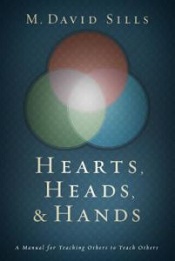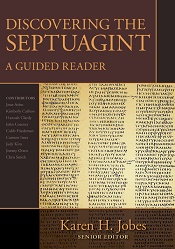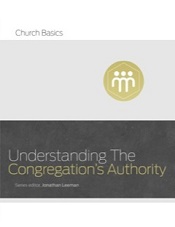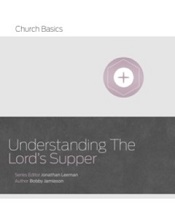November 2016
Monthly Archive
November 30, 2016
Posted by craighurst under
Various
Leave a Comment
 “The great tragedy of the world is not that it is unreached but that it is undiscipled.”
“The great tragedy of the world is not that it is unreached but that it is undiscipled.”
Would you believe that “in the USA there is one trained Christian worker for every 235 people” and that “once you leave the USA, that drops to one trained Christian worker for every 450,000 people”? This is the conclusion M. David Sills, author of The Missionary Call and Reaching and Teaching, has reached after a long and fruitful ministry in Ecuador serving as a missionary, church planter, and ministry leader trainer. Sills is now a professor of missions at The Southern Baptist Theological Seminary and is the founder and president of Reaching & Teaching International Ministries. Sills is also the author of
The great commission calls us to reach the unreached with the gospel that we might see them saved. And with each passing year more and more people are reached and this call is answered more and more. But the great commission is more than just a call to evangelize – it is also a call to disciple. Contrary to some missiologists, Sills believes that the problem worldwide missions has is not that it is not reaching unbeliever with the gospel and seeing conversions but that it is not reaching believer’s with the gospel after conversion through good discipleship.
While many people believe the USA is in a post-Christian state, it still enjoys more ministry leaders, trainers, and resources than any other country in the world. “However,” says Sills, “around the world new believers who have come to the Lord with families saturated with false religions and anamistic worldviews will interpret the little they know about Christ against that backdrop, and the result will be syncretism at best.” (2) If the new believer’s in these now-reached people groups are not discipled correctly then they will in turn disciple new believers in the same unsatisfactory way. We need solidly discipled Christians to be equipped to disciple new believer’s in a sustainable way. Further, they need tools to do so.
It is for the purpose of supplying these tools that Sills has written Hearts, Heads, and Hands: A Manual for Teaching Others to Teach Others (B&H, 2016). As the title indicates, this book addresses the three key areas of discipleship which focuses on the whole person: head, hearts, and hands. The book divides the three discipleship areas into nine modules so that trainees receive instruction in each area. The Heart sections cover spiritual disciplines such as prayer, fasting, Bible reading, the fruit of the Spirit in Galatians 5, and the nine aspects of the believer’s thought life as found in Philippians 4:8-9. The Head sections cover areas such as systematic theology, church history, hermeneutics, and counseling. The Hands sections cover things like the pastor’s life, the ordinances, church finances, and church discipline.
The book is written with two helps for walking through the material. First, the bulk of the book presents the material in the form of a book. This walks through the material in a way as to explain all of the parts covered to the trainer themselves. It weaves together teaching you the material and along with teaching you how to in turn teach it. Secondly, at the end of the book is an almost 300 page detailed outline of the material for the trainer to use while teaching the material. This is extremely helpful as it is much easier to teach from an outline and the work is already done for you.
Hearts, Heads, and Hands is a missionaries dream in terms of giving them a comprehensive discipleship plan for new believers which addresses the whole person. While the book is written by a missionary for missionaries, I can see where this book would be useful for pastors and ministry leaders in the USA. I can see missions agencies training their new missionaries with this book and training them to use it to disciple new believers where the Lord sends them.
I received this book for free from B&H for this review. I was not required to write a positive review. The opinions I have expressed are my own. I am disclosing this in accordance with the Federal Trade Commission’s 16 CFR, Part 255 : “Guides Concerning the Use of Endorsements and Testimonials in Advertising.”
November 28, 2016
Posted by craighurst under
Various
1 Comment
In June B&H began The Gospel for Life Series, edited by Russell Moore and Andrew Walker, which connects the gospel message with everyday life issues. Both Moore and Walker serve at the Ethics and Religious Liberty Commission (ERLC) of the Southern Baptist Convention and, Moore especially, have written and spoken extensively on gospel responses to the ethical issues Christian’s face.
 The books are structured around answering five questions: What are we for?, What does the gospel say?, How should the Christian live?, How should the church engage?, What does the culture say? For example, in answering What are we for?, the authors all begin in Genesis with creation. This starting point intentionally grounds all discussion within the framework of creation which is the beginning of the biblical story line of creation, fall, redemption, and re-creation/consummation. This creation starting point helps us to see God’s intention within these various issues and in turn helps us to see what has gone wrong with them as a result of the fall. Some readers will be challenged by the creational foundations of religious liberty presented by Andrew Walker in the book on The Gospel & Religious Liberty. This was a new concept for me and something I will continue to think about.
The books are structured around answering five questions: What are we for?, What does the gospel say?, How should the Christian live?, How should the church engage?, What does the culture say? For example, in answering What are we for?, the authors all begin in Genesis with creation. This starting point intentionally grounds all discussion within the framework of creation which is the beginning of the biblical story line of creation, fall, redemption, and re-creation/consummation. This creation starting point helps us to see God’s intention within these various issues and in turn helps us to see what has gone wrong with them as a result of the fall. Some readers will be challenged by the creational foundations of religious liberty presented by Andrew Walker in the book on The Gospel & Religious Liberty. This was a new concept for me and something I will continue to think about.
Another helpful aspect of this series is how it frames the Christians response within the community of the Church. So, it is not enough for the individual Christian to be equipped to respond to the culture but it is the collective witness of the whole Church, the bride of Christ, that should speak loudly to these issues with the truth of the gospel. For example, when it comes to racial reconciliation, the Church needs to have the conversation about it, yes, even all white churches, because, as Trillia Newbell writes in The Gospel & Racial Reconciliation, “The problem is, race continues to be talked about because there continue to be problems. And there continue to be problems because often conversations about race revolve around racism. And these conversations centered on racism happen because people are racist. So, until we see an and to racism, both personal and systemic, we will need to continue this conversation.” (49)
enough for the individual Christian to be equipped to respond to the culture but it is the collective witness of the whole Church, the bride of Christ, that should speak loudly to these issues with the truth of the gospel. For example, when it comes to racial reconciliation, the Church needs to have the conversation about it, yes, even all white churches, because, as Trillia Newbell writes in The Gospel & Racial Reconciliation, “The problem is, race continues to be talked about because there continue to be problems. And there continue to be problems because often conversations about race revolve around racism. And these conversations centered on racism happen because people are racist. So, until we see an and to racism, both personal and systemic, we will need to continue this conversation.” (49)
 One final helpful aspect of this series is its interaction with the current cultural opinion on these issues. After all, if everyone were living according to God’s plan as outlined in Scripture then there wouldn’t be a reason for these books to exist. For example, in The Gospel and Same-Sex Marriage, Al Mohler Jr. briefly outlines four cultural changes in regards to sexual ethics that paved the way for same-sex marriage: birth control and contraception, divorce, advanced reproductive technologies, and sex outside of marriage. Mohler’s words are biting:
One final helpful aspect of this series is its interaction with the current cultural opinion on these issues. After all, if everyone were living according to God’s plan as outlined in Scripture then there wouldn’t be a reason for these books to exist. For example, in The Gospel and Same-Sex Marriage, Al Mohler Jr. briefly outlines four cultural changes in regards to sexual ethics that paved the way for same-sex marriage: birth control and contraception, divorce, advanced reproductive technologies, and sex outside of marriage. Mohler’s words are biting:
The marriage crisis is a moral crisis. It did not start with same-sex marriage, nor will it end there. This has all been made possible by a deliberate breakdown in the moral immune system of human society. Western civilization has forfeited its immunity against the breakdown of marriage, the family, and the integrity of human sexuality. We sowed the seeds of the current confusion. To make matters indefinitely worse, the failure of Christian churches to address these issues with the full weight of Christian conviction has created, in the eyes of many, an insurmountable challenge to evangelical credibility on the issue of homosexuality and same-sex marriage. Today’s movement toward the total acceptance of homosexual behavior and relationships was only made possible because some heterosexuals first did their best to undermine marriage. (95-96).
The Gospel for Life Series is the perfect primer on a number of current cultural issues that Christians needs to be aware of and ready to give a Christian gospel-informed answer to. The contributors are theologians, cultural experts, and local church servants. We cannot hide our heads in the sand or just let other Christians deal with it. If you are going to obey the command to love your neighbor as yourself then you must be equipped to discuss these important issues. The witness of Christ and His church are at stake.
You can learn more about this series from their website www.thegospelforlifeseries.com. Other forthcoming books in the series include:
The Gospel & Abortion (January 2017)
The Gospel & Adoption (January 2017)
The Gospel & Marriage (January 2017)
The Gospel & Parenting (January 2017)
The Gospel & Parenting (April 2017)
The Gospel & Pornography (April 2017)
The Gospel & Work (April 2017)
I received these books for free from B&H for this review. I was not required to write a positive review. The opinions I have expressed are my own. I am disclosing this in accordance with the Federal Trade Commission’s 16 CFR, Part 255 : “Guides Concerning the Use of Endorsements and Testimonials in Advertising.”
November 16, 2016
Posted by craighurst under
Various
Leave a Comment
 Early on, students of New Testament Greek learn that the Greek of the New Testament is only one kind of Greek worth learning when it comes to reading the Bible. Learning classical Greek will open your eyes to a larger vocabulary but dabbling in translating the Septuagint (Greek translation of the Old Testament) will necessarily expand your strengthen your Greek skills and open your eyes to another aspect of the world of biblical interpretation.
Early on, students of New Testament Greek learn that the Greek of the New Testament is only one kind of Greek worth learning when it comes to reading the Bible. Learning classical Greek will open your eyes to a larger vocabulary but dabbling in translating the Septuagint (Greek translation of the Old Testament) will necessarily expand your strengthen your Greek skills and open your eyes to another aspect of the world of biblical interpretation.
Having already coauthored, along with Moisés Silva, Invitation to the Septuagint, 2nd Ed., Karen H. Jobes, author of the highly recommended commentary 1 Peter (BECNT), has edited Septuagint Discovering the Septuagint: A Guided Reader (Kregel, 2016). Given its aim, this book does not cover the entire LXX but rather selects two to six sections from nine books in the Old Testament in order to provide the student with a variety of genres to translate from.
The outline of the book and chapters is fairly simple. There is a brief introduction to each book of the Bible from which the selections are taken. This introduction is not a typical introduction about the books contents but rather about the background of its translation from Hebrew to Greek including any challenges and peculiarities translating the book presents. Following the introduction is a verse-by-verse, with word-by-word and phrase-by-phrase, translation of the selected texts. The Greek is drawn from the Rahlfs-Hanhart critical edition of the LXX and the editors provide the New English Translation of the Septuagint (NETS) translation at the end of each section, noting where they diverge at times. There is also a short section at the end of each NETS translation charting citations and significant allusions of the covered text in the New Testament. While citations are pretty easy to identify, allusions can be illusive and translators will differ on when there is and isn’t one in a text. I personally think allusions in Romans 1:18-32 to Genesis 1 were missed in the first section of the book.
The shining mark of this book is that it was written with students in mind. All of the contributors were either students of or teaching aids/assistants to Jobes while she developed the material for the book. This is a book that serves the reader because it solicited its intended audience for ways in which the book would be most helpful to them.
The only drawback to this book is its lack of interaction with the underlying Hebrew text to the Greek translation itself. Rahlfs-Hanhart’s critical edition of the LXX is itself a translation and this book is essentially supporting the NETS which is a translation of a translation. Hebrew has a much more limited vocabulary than Greek and the syntax structures are different, both of which present the translator with difficulties. I think the book could have been strengthened (though it would have necessarily made it longer) if it interacted with the Hebrew to justify the Greek that was chosen in the first place. This would change definitely change the character of the book and maybe it is an idea for a different kind of book all together.
That criticism aside, Jobes and her students have developed a helpful book for students of New Testament who want to broaden their Greek skills and dabble with the LXX text. This is a great text for advanced Greek students and a helpful companion to Jobes and Silva’s Invitation to the Septuagint.
I received this book for free from Kregel for this review. I was not required to write a positive review. The opinions I have expressed are my own. I am disclosing this in accordance with the Federal Trade Commission’s 16 CFR, Part 255 : “Guides Concerning the Use of Endorsements and Testimonials in Advertising.”
November 14, 2016
Posted by craighurst under
Various
Leave a Comment
“The Christian life is a churched life.” This simple, yet profound statement under-girds a new series of books Church Basics edited by Jonathan Leeman from B&H. This series is aimed at the average church member and each book addresses a specific part of church life of which every church member ought to be both knowledgeable about and involved in.
 Understanding Baptism answers basic questions like What is Baptism?, Who Should be Baptized?, and How Should Churches Practice Baptism? This book, as well as all those in the series, are written, and thus the questions are answered, by those who take a Baptistic understanding of church government, baptism, and the Lord’s Supper. Even those Christians who have a different understanding of these church life issues will benefit from these books if they want to learn the other side and want to be challenged about their own position. Leeman defines baptism as follows: “Baptism is a church’s act of affirming and portraying a believer’s union with Christ by immersing him or her in water, and a believer’s act of publicly committing him or herself to Christ and his people, thereby uniting a believer to the church and marking off him or her from the world.” (6)
Understanding Baptism answers basic questions like What is Baptism?, Who Should be Baptized?, and How Should Churches Practice Baptism? This book, as well as all those in the series, are written, and thus the questions are answered, by those who take a Baptistic understanding of church government, baptism, and the Lord’s Supper. Even those Christians who have a different understanding of these church life issues will benefit from these books if they want to learn the other side and want to be challenged about their own position. Leeman defines baptism as follows: “Baptism is a church’s act of affirming and portraying a believer’s union with Christ by immersing him or her in water, and a believer’s act of publicly committing him or herself to Christ and his people, thereby uniting a believer to the church and marking off him or her from the world.” (6)
Understanding the Congregation’s Authority addresses basic issues about the congregations role in the church such as what Jesus expects of his  disciples in the church, the role Adam had and how that relates to church members, and the role pastors play in a church members discipleship. Too often is our churches the pastors (and its even worse if there is only one full-time pastor) and elders (though this is not always the case with them) are expected to do the lion share of church ministry. But is this the case? Is a pastor supposed to master all ministries so that he can be the only one ministering to everyone else? This book argues no and provides a solidly biblical case for the every-member-a-minister mindset. This is congregationalism, which is to say that, while the elders lead a local church, the congregation rules the church because that’s their God-given responsibility.
disciples in the church, the role Adam had and how that relates to church members, and the role pastors play in a church members discipleship. Too often is our churches the pastors (and its even worse if there is only one full-time pastor) and elders (though this is not always the case with them) are expected to do the lion share of church ministry. But is this the case? Is a pastor supposed to master all ministries so that he can be the only one ministering to everyone else? This book argues no and provides a solidly biblical case for the every-member-a-minister mindset. This is congregationalism, which is to say that, while the elders lead a local church, the congregation rules the church because that’s their God-given responsibility.
 Understanding the Lord’s Supper first presents a biblical theology of the Lord’s Supper and then answers questions like Who can Celebrate it?, Who can Administer it?, and How Should Christians Approach it? I encourage Christians to read this book and the book on baptism together and to read the book on baptism first. The baptism book will help you understand how baptism unites individual Christians together and this book on the Lords’ Supper will help you see how those united Christians express their unity to the world and reaffirm their unity with each other. Jamieson defines the Lord’s Supper as follows: “The Lords’s Supper is a church’s act of communing with Christ and each other and of commemorating Christ’s death by partaking of bread and wine, and a believer’s act of receiving Christ’s benefits and renewing his or her commitment to Christ and his people, thereby making the church one body and marking it off from the world.” (25)
Understanding the Lord’s Supper first presents a biblical theology of the Lord’s Supper and then answers questions like Who can Celebrate it?, Who can Administer it?, and How Should Christians Approach it? I encourage Christians to read this book and the book on baptism together and to read the book on baptism first. The baptism book will help you understand how baptism unites individual Christians together and this book on the Lords’ Supper will help you see how those united Christians express their unity to the world and reaffirm their unity with each other. Jamieson defines the Lord’s Supper as follows: “The Lords’s Supper is a church’s act of communing with Christ and each other and of commemorating Christ’s death by partaking of bread and wine, and a believer’s act of receiving Christ’s benefits and renewing his or her commitment to Christ and his people, thereby making the church one body and marking it off from the world.” (25)
The Church Basics series is decidedly Baptistic, solidly biblical, immediately practical, and church focused. This series seeks to ground its claims in Scripture and, though it addresses the topics from a certain viewpoint, it interacts with varying positions to show its differences, which only serves to strengthen its conclusions. This is an immensely helpful series that can benefit new believers as they seek or orient themselves to this new thing called the Church and it will further serve other Christians who are looking to grow in their knowledge of these issues so they can be better involved in their local church.
Other books in this series are as follows:
Understanding Church Leadership by Mark Dever
Understanding Church Discipline by Jonathan Leeman
Understanding The Great Commission and the Church by Mark Dever
I received these books for free from B&H for this review. I was not required to write a positive review. The opinions I have expressed are my own. I am disclosing this in accordance with the Federal Trade Commission’s 16 CFR, Part 255 : “Guides Concerning the Use of Endorsements and Testimonials in Advertising.”
 “The great tragedy of the world is not that it is unreached but that it is undiscipled.”
“The great tragedy of the world is not that it is unreached but that it is undiscipled.”





